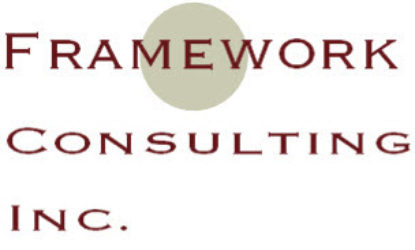Yes, that’s right. Throw away Customer Service Training.
That’s the new mantra of companies that are thinking seriously about delivering a particular brand promise to their customers.
The truth is that companies have become chained to a vague commitment to “better service” without this “better service” being defined in way that ensures that definite progress can be made. Instead, “bad customer service” is used as an accusation that is used to blame companies at all levels for not providing service… at all levels. Yes, that’s right…. companies are blamed for not providing service at ALL levels.
Small companies are blamed for not providing the consistent service of larger companies.
Large companies are blamed for acting as if they do not care.
Low-priced companies are blamed for being cheap, and not supplying the luxuries that people want.
High-end companies are blamed for charging too much.
What’s going on here? Are customers being unreasonable to ask for so much? Are the complaints just a matter of the impossibility to trying to please everyone?
In Port of Spain, should the doubles vendor on Long Circular Road be asked provide the same level of service as Hot Shoppe? In Kingston, should the pan chicken vendor on Red Hills Road be asked to provide the same level of service as KFC up the road? In Bridgetown, should Jus’ Grilling provide the same levels of service as Champers?
The vague quality of these questions leave us all in a quandry, that pushes most of us to nostrums such as “You get what you pay for,” implying that the issue has something to do with the price that the consumer is willing to pay.
These kinds of vague non-answers seem to let companies off the hook, but they are just a mistake on the part of companies that refuse to do the much more difficult work of defining a brand experience for their customers that is precise and clear.
Clarity and precision have nothing to do with price. They also have nothing to do with the size of a business in terms of total revenue, or profit.
For example, the pan chicken vendor on Red Hills Road is not providing the consistency of KFC, and he (or she) should not try to. Instead, he should focus on the brand experience that he wants his customers to have — one that consists of:
- a home-cooked taste that changes with people’s tastes
- the pungent smell of the chicken that pervades the air
- all-night availability
- friendly and fast service and gets better with repeat purchases
- the convenience of not having to leave the car
- the low cost that comes from buying on the street in an “unsecured” environment
Instead, the drum-pan chicken vendor should seek to provide an experience that is uniquely the “Red Hills pan chicken experience” …. and nothing else. The same principle applies to KFC, which should also try to provide a unique experience.
Neither outfit should try to provide “good customer service.” In doing so, they hold themselves hostage to customers’ (and employees’) complaints that only come about because companies are insufficiently courageous enough to define unique service that is clear. The emotional challenge comes from the fact that when a company defines itself in a unique way, then they immediately must define themselves as “not-everything.”
My observation is that executives of Caribbean companies (with whom I have the most experience) are downright scared to define their companies as “not-everything”. Declaring that your company is a unique “something” actually defines it as “not-everything” when it’s done well. Sticking to your guns and defining yourself as “not-everything” takes courage and are not for the faint of heart, especially when contracts and business opportunities seem to be abundant in the areas that are outside the defined zone of expertise.
Recently, I had the opportunity to take my own company down this path. In 2005 we made the decision to use the tagline, “High-Stakes Interventions.” One of my partners-in-crime (but not an employee) shared with me that the tagline made him feel as if he were a CEO, that he would not want to give the company a call. He was right, and I knew it in the moment.
I gulped, and after thinking about it for a minute I realized that CEO’s would only call me when they needed to, not when they wanted to. In this sense, my firm was willing to create a brand experience that is similar to that of surgeon or a skilled mechanic — someone that you call for help when you absolutely needed that particular kind of expertise (and not just for a good lime). This little interchange helped make my company’s brand just a bit more clear and precise, and it grew into the truth that I now have embraced and included in my marketing copy, which is that “High-Stakes Interventions are not for Everyone.”
The downside of failing to define the company as “not-everything” is a kind of superficiality that creates a blurriness in the mind of the customer that is the very opposite of a brand experience that is clear and precise.
The upside is that a company that sticks to its guns can do the following differently:
- distinguish the branded experience at a deep level, and define the experience in way that makes it clear when the experience is present, and when it’s not
- define in depth the unique combination of People, Processes and Products/Services that together provide the experience
- decide how much to invest in making the experience real, and also what the costs are for not committing to an alternate experience
For the customer, this only helps. I go to KFC when I want one kind of experience, and I can choose a different kind of experience by visiting Cheffette, Royal Castle, Pollo Tropical or Island Grille. Rather than being told that I get what I pay for, I can make my choice based on the brand I choose to experience.
The job of the proprietor is to ensure that they have accurately defined their own brand experience, and have the internal brand to deliver it over and over again.
In this sense, generic customer service training needs to be thrown away, and replaced by very specific, clear and precise brand-oriented “experience training.”

